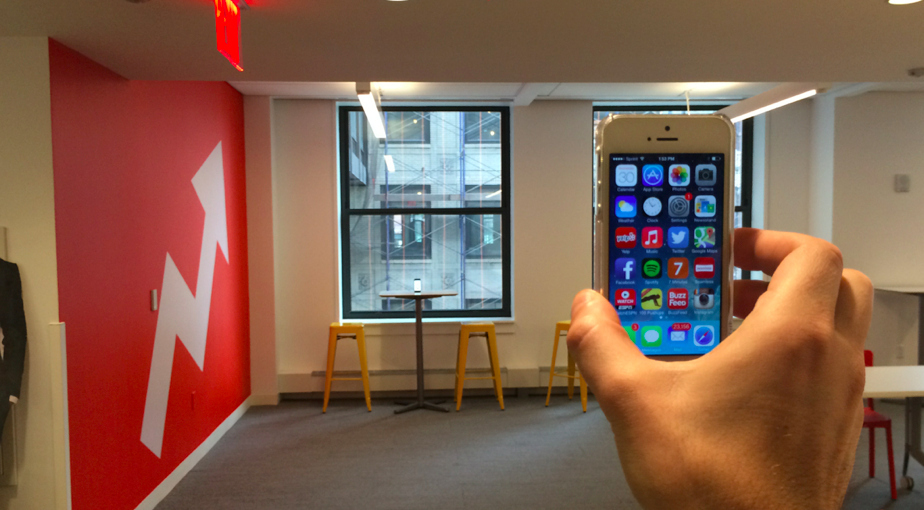Among the most powerful things about the first iPhone was how it made old software metaphors — pressing buttons, scrolling through pages — much more literal. Scrolling was now linked, one-to-one, to the tip of your finger. You didn't click a button on a mouse to command a software cursor to press a button for you, you just tapped it with your thumb. This was a profound change and one that was hard to advertise or talk about. But it was something that users were able to grasp almost immediately.
Movement in iOS, and in Android, is generally directly connected to one of two actions: a tapping or swiping, or hitting a button or dragging (or pushing!) something around. The weirdest these direct actions really get is pinch-to-zoom, which is somehow intuitive but doesn't really have a real-world equivalent. These are all vital in making iOS feel like iOS.
Also vital: the animations, which, in iOS 7, are centered around zooming. Or, more accurately, flying. Tapping an icon sends it flying at your face, at which point it begins to transform into an app. Closing it pulls it back away from you; it's as if the app is falling into the screen. Our minds take every other movement metaphor in iOS literally, but this one is weird. It feels three-dimensional in a way that others don't.
The sensation of depth is exaggerated in iOS 7, and profound enough that it led some users to complain of a sort of seasickness (which Apple both acknowledged and provided a fix for, in an update).
Just how deep is the interface? BuzzFeed data team member Jake Levy ran the numbers:
I used the small-angle approximation since the size of the object (in this case the app) is significantly smaller than the distance from which you are observing it. This allowed us to assume that the apparent size of the object is inversely proportional to the distance from which you are observing it.
Here's what he came up with:
In order for an iPhone app to appear to be the width of an iPhone icon, it would have to be about 5.33 feet away. That is to say, if iOS animations suggest that the icons are falling away from you, they are falling about 5 feet, and moving pretty fast. Assuming it takes about 0.8 seconds for this animation to complete, the app is moving at an average of about 6.6 feet per second, or about 4.5 miles per hour: a slow jogging speed.

Then there are the folders. For an app to appear the width of one of those tiny folder icons, according to these calculations, it would have to be about 24.62 feet away. That's 19.29 feet of depth between a folder-size icon and a full-size icon. It's kind of incredible:
Those 19.29 feet are traveled, again, in about 0.8 seconds, which works out to a little more than 24.1 feet per second, or 16.4 miles per hour. That's an average too — the animation accelerates then decelerates. Or at least it looks that way. It seems probably that, at its top speed, this icon is flying at or away from your face at over 20 miles per hour.
Kind of casts that motion-sickness stuff in a new light! iOS 7 certainly hints more strongly at depth than iOS 6, in which the zooming felt less physical. It was more like expansion than zooming, a closer relative to pinch-to-resize.
Update: Developer Steve Streza provides some background, on Twitter: "Those animations are based on spring physics. So it's like you stretched a spring from you to the folder and then let go... Animations pre-iOS 7 were based on sine wave curves. iOS 7 animations have a more gradual decay." Thanks Steve!
Anyway, now you know why iOS 7 doesn't just look different, it feels different: Every time you close an app to a folder, you're hurling it about 25 feet away from your face.
